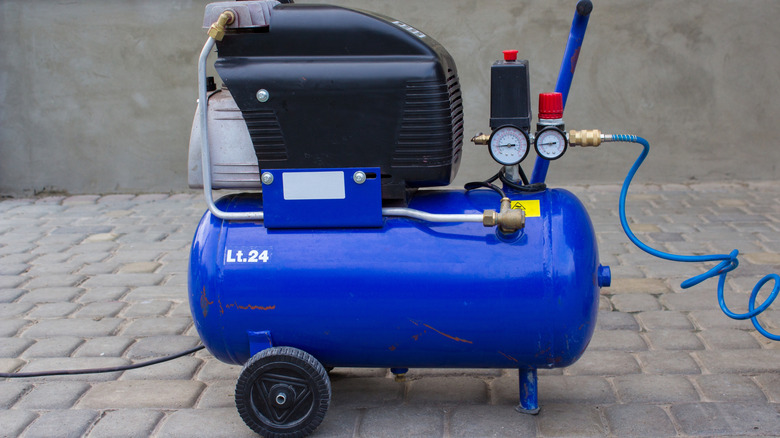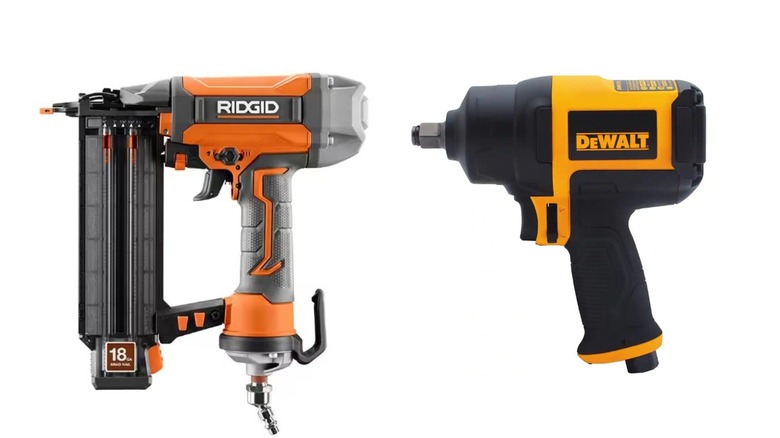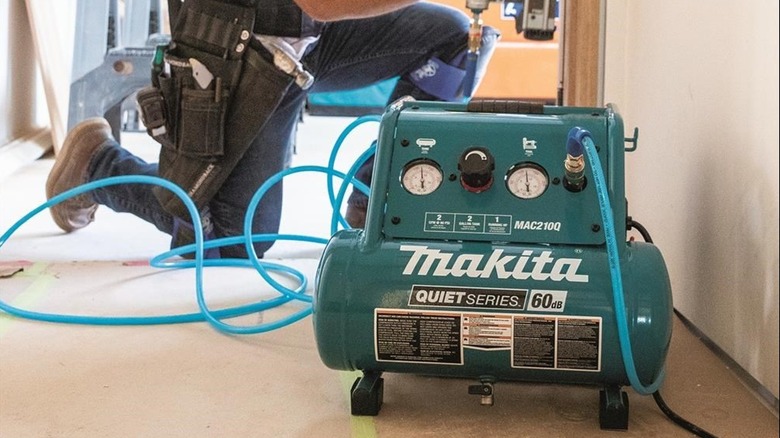Here's What Size Air Compressor You'll Need For Your Air Tools
We may receive a commission on purchases made from links.
Used in a variety of professional settings, as well as home projects, air tools are an invaluable asset. From blow guns and impact wrenches to framing and brad nailers, these pneumatic devices help reduce labor and improve efficiency. However, you need to ensure the air compressor you select is up to the task. We previously put together a comprehensive air compressor buyers' guide with top brands and affordable picks to help you get started.
But when shopping for a compressor, it can be confusing in terms of what size you need to effectively operate your air tools. Not only are there different types of air compressors, but they also range in tank capacity from just one up to more than 100 gallons. Generally, air tools that operate periodically in short bursts don't require a large capacity tank. However, tools that need to run straight for several minutes do necessitate a greater capacity compressor. The wrong size tank can make projects frustrating, such as frequently running out of high-pressure air. And a compressor that greatly exceeds your needs could have you spending far too much unnecessary money.
Common air tools and the appropriate size compressor tank to operate them
A common pneumatic tool is a brad nailer, which is ideal for tasks like attaching molding and trim to interior spaces. Because the air from the compressor is only required briefly when pressing the trigger, it doesn't need a massive surplus of air. So, you would only need a small compressor with a tank capacity between 2 and 6 gallons. Of course, it gets a bit more complicated with things like an air drill, which is one of the gadgets for mechanics that are not your standard power tools.
Impact wrenches, which run more continuously, require more tank capacity, but how much more? Unfortunately, there isn't an official consensus. For example, Electronics Hub recommends you take the tools' CFM (cubic feet per minute) rate and multiply it by a minimum of 5 to get the proper tank size in liters. Using the DeWalt ½ inch Heavy Duty Pneumatic Impact Wrench as an example, you'd take the 5.9 CFM rate, multiply it by 5 and get 29.5. A compressor with around 30 liters or 8 gallons of capacity would serve you well.
Other outlets, such as Clever Handymen, insist that tank size is a matter of convenience, and an impact wrench could run optimally from as small as a 5-gallon tank up to a 20-gallon tank. Although if you plan to operate multiple air tools simultaneously, you'd be wise to opt for at least a 20-gallon tank.
Air tool SCFM requirements and choosing the right compressor
It's not just tank size that matters when selecting an air compressor, as you'll need to ensure the unit is powerful enough to properly run your air tools. And, what if you have several pneumatic tools? How do you know a compressor is robust enough to meet your needs?
One way to ensure you'll be covered is to take the air tool with the greatest SCFM figure (standard cubic feet per minute), and multiply it by 1.5, per Home Depot. So, say the SCFM-rated tool you have is an air hammer with a 4.4 rating at 90 PSI. Multiply that figure by 1.5 and you get 6.6 SCFM, which would be the minimum a compressor would need to provide, with a generous buffer. If you plan on using multiple air tools simultaneously, you would need to total up each tool's SCFM to determine the proper compressor rating required.


